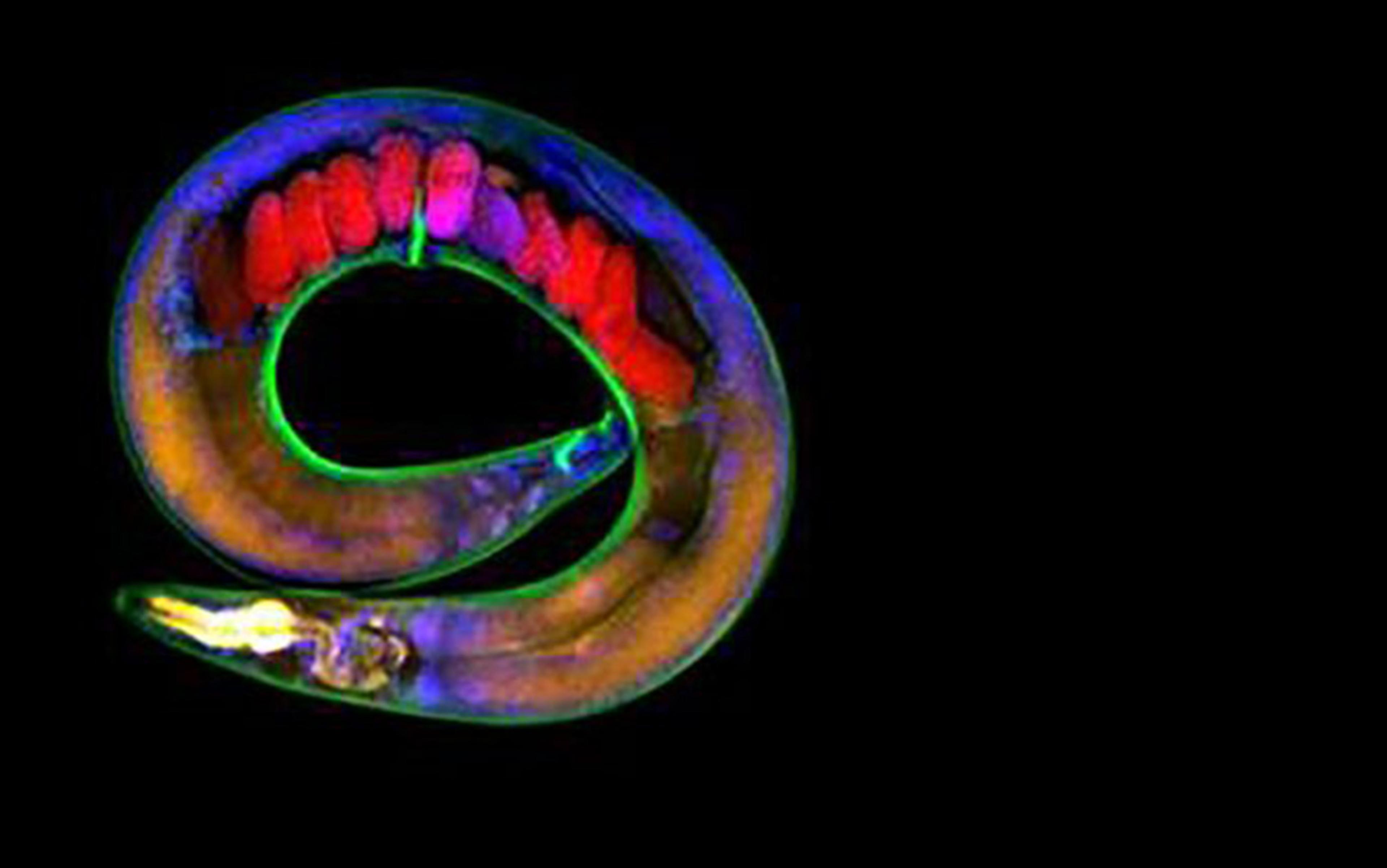Charles Darwin closed his On the Origin of Species (1859) with a provocative promise that ‘light will be thrown on the origin of man and his history’. In his later books The Descent of Man (1871) and The Expression of Emotions in Man and Animals (1872), Darwin shed some of that promised light, especially on the evolved emotional and cognitive capacities that humans shared with other mammals. In one scandalous passage, he demonstrated that four ‘defining’ characteristics of Homo sapiens – tool use, language, aesthetic sensitivity and religion – are all present, if rudimentary, in nonhuman animals. Even morality, he argued, arose through natural selection. Altruistic self-sacrifice might not give the individual a survival advantage, but, he wrote:
There can be no doubt that a tribe including many members who, from possessing in a high degree the spirit of patriotism, fidelity, obedience, courage, and sympathy, were always ready to aid one another, and to sacrifice themselves for the common good, would be victorious over most other tribes; and this would be natural selection.
Yet Darwin’s revolutionary understanding of the evolved nature of human emotions has been neglected since. When scientists turned again to the mind a century later, the computer was the model that both sparked the cognitive sciences revolution and served as its exclusive investigative tool. The computational model of the mind has been very powerful, but it has no way (and no need) to capture the biological ingredient of motivational feeling-states, and has been unconcerned with the evolved substrate to such processes. Even when evolutionary psychology rose to prominence in the 1990s, it did so by ignoring the actual evolved physiology and behaviour of brain and body. Rather, it set out on a search for computational modules that had placed human behaviour in some largely mythical Pleistocene. Indeed, contemporary moral psychology and its philosophical counterpart often continue this modular approach, assuming the existence of innate normative switches in the human mind and discounting the emotional nature of ethical actions.
Finally, in our own era, artificial intelligence has made great strides, holding out the promissory note of imminent general intelligence. While algorithmic digital computation produces problemsolving machines, such problemsolving – confusedly called ‘intelligence’ by the dominant paradigm – lacks the obvious motivational goads and other affective triggers observed in real sentient animals. In fact, artificial intelligence and artificial-life research has lost interest, unapologetically, in the biological creature.
Without the same fanfare, a group of intensively creative scientists, including the neuroscientists Jaak Panksepp and Antonio Damasio and the neuropsychologist Richard Davidson, have been developing a new field of affective (or emotional) science since the 1990s. The field of affective neuroscience isolates emotional brain systems (largely in regions of the brain that we share with other mammals) that undergird adaptive behaviours in vertebrates. With the help of neuroscientific and behavioural research, we are beginning to appreciate how the ancestral mammal brain is alive and well inside our higher neocortical systems. Unlike the computational approach to mind, the affective turn is deeply rooted in what we know about the brain as a biological reality. In the first decade of the new millennium, affective (or emotional) studies began to trickle into disciplines such as ethology (the study of animal behaviour). The primatologist Frans de Waal, for example, endeavoured to recognise, in a rigorous and scientific manner, the real emotions in our primate cousins. In economics, psychologists such as Daniel Kahneman began to detail biases, often emotionally grounded, that derail rational decisionmaking. And in philosophy, thinkers such as Martha Nussbaum began to reintroduce emotion as a form of pseudo-judgment. The time has finally come for a defence of emotions as biological adaptations that do not merely follow or corrupt the dictates of reason, but successfully lead as well.
Of course, this project rests on the assumption that there really are universal natural emotions inherited from our ancestors. Are emotions truly universal? Some historians and anthropologists argue that we learn our emotions from our cultural experience, and that they are thus constituted by very particular circumstances. If that’s the case, then our argument for the importance of emotional wellsprings in the evolution (and therefore the nature) of the human mind comes unmoored. So is the basic emotional structure of the mind a universal, biological fact?
Recently, the biological basis of human emotions has come into question by thinkers who focus largely on higher-level emotions and our cultural narratives about emotional life. This approach has done great work in celebrating the diversity of emotional cultures, and their historical and anthropological differences, but it loses something crucial when it rejects natural emotions altogether. One of its most vocal and popular proponents is the social psychologist Lisa Feldman Barrett. In her book How Emotions Are Made (2017), Barrett argues that emotions are conceptual events, and our emotions, such as anger or sadness, are very fast mental constructions – almost like real-time, miniature theories about our experiences.
Emotions, in this formulation, are intellectual processes, requiring language to carve raw feelings into discrete emotions. Instead of biological or physiological systems, emotions are said to be more like thoughts, and each person learns early in life how to name and organise them into seemingly natural kinds, which in truth, according to Barrett, are cognitively and culturally constructed conventions. When your stomach churns in a bakery, Barrett argues that your brain labels those feelings as ‘hunger’, whereas a different context – say, a hospital waiting room – leads your brain to label the same feelings as ‘worry’. She applies this same logic to all emotions, claiming that there is no such thing as innate anger or lust, but that there are merely contextual interpretations of bodily arousal.
The argument for this counterintuitive view rests precariously on an analogy with certain top-down aspects of sensory perception. That perception is subject to distortion under even quite slight cognitive suggestion is well-known, and psychologists have made careers ‘priming’ subjects to misperceive something, or notice something that would not otherwise stand out. For example, asking witnesses how fast the car is moving when it ‘smashes’ into another vehicle raises the witnesses’ estimated speed significantly, as compared with those asked how fast the car is moving when it ‘hits’ the other vehicle. Cognitive bias on certain kinds of perception is demonstrable even on seemingly unmediated perceptions.
Similarly, Barrett claims, our minds automatically suggest ways to categorise feelings into apparently instinctual emotions – they appear instinctual because we do not have conscious access to this mental categorising activity. However, those who follow the innovations of affective science (as we do) think that deep emotions such as lust, rage, care, fear, seeking, grief and play are not conceptually constructed, even though they might be conceptually elaborated in the kinds of minds that have conceptual capabilities.
On closer examination, the analogy between perception and emotions breaks down. For a start, while some perception is open to top-down structuring (eg, prejudice influences how I ‘see’ a stranger), most is not. Recent work from the Yale Perception and Cognition Lab, particularly by Chaz Firestone and Brian Scholl, shows that most perception is reliably free of top-down influence. Perception is not as penetrable to higher cognitive function, as Barrett and others contend. In fact, the empirical work seems to suggest that repeatable constraints or influences on perception come mostly from feelings, emotions or affects, not language, beliefs or concepts. In other words, it is not enough to have a top-down personal or cultural theory about the danger of crocodiles, say, to make you recoil when you see them. A bottom-up fear association (wherein the alarm system of the amygdala has conditioned or coded an early perception of crocodilic violence) can heavily influence the way you see (and respond to) this new percept of a crocodile. The feeling state makes one define the croc encounter as fearful, whereas Barrett and other constructionists think that defining it as fearful is what produces the feeling state. This means that the permeability of perception in fact cuts against the argument that emotion is another form of cognition since it reveals a physiological causal force (viz, the affective systems) that shapes and constrains perception and cognition.
A physiological pattern underlies ‘anger’, and such patterns evolved in mammal brains to aid their survival
On a constructionist view I, or my culture, could decide to define fear as happiness, and the redefinition would make it so. But fear feels awful and drives very different behaviour than happiness. Constructionists such as Barrett admit to a low-level positive or negative valence of feelings (core affect), but then ascribe discrete emotions such as fear and anger to the cognitive labelling of this low-level feeling. In our view, this theory radically underdetermines the neuroscience, ethology and even the feeling (phenomenology) of our emotions, which all seem more useful rubrics by which to differentiate emotions.
There is clearly a diversity of possible emotional profiles in individuals and cultures that seems to be supported by evidence such as atypical emotional responses in individual self-reports and atypical neural patterning in fMRI studies. Yet these are not anomalies that unravel the biological paradigm of emotions, but exceptions that are notable for being different from the norm. Affective science posits a layered brain that is plastic enough to account for diversity, without having to throw out the biology of emotions. The reason why we classify a handful of behaviours, expressions and feelings as ‘anger’ is because an identifiable physiological pattern underlies them, and such patterns evolved in mammal brains to aid their survival. Brain scans reveal some diversity of neural pathways during anger or lust, for example, but not enough diversity to confound the density distributions of the data. The higher (or tertiary) level of language, culture and conscious deliberation does have an effect on how our emotions are manifested, but the range of possible emotional states and interpretations is fairly strict and limited. This follows from our argument that there is a universality of emotions with room for slight (we can of course quibble about this word) modifications through experience.
Some critics claim that there are very rarefied neocortically enmeshed emotions (such as ‘ellipsis’) that don’t seem to fit into a primary level of genetically engraved and largely dedicated suite of affects. ‘Ellipsis’ is a word coined to describe the sadness a human feels when she contemplates that she will not live to see the future. An unscientific but intriguing site, The Dictionary of Obscure Sorrows, details many of these higher-level emotions, including the emotion of ‘liberosis’ – a desire to care less about things, as when many adults long to be a child again. The manner in which historians and anthropologists study emotions will indeed help contemplation and explanation of these more cognitive, discursive and culturally bounded feelings, but there is also room to study how these rarefied emotions might be developmental outgrowths of interactions between mammalian affective systems at more basic levels. For example, ‘liberosis’ seems to have both functional as well as phenomenological similarities to the affective system identified as ‘play’; likewise, ‘ellipsis’ might have roots in the more fundamental system of ‘panic/grief’.
Crucially, over the past three decades, affective neuroscientists have engaged specialised technology to diligently map distinct neural pathways for the most basic, primary emotions. Extensive research on the amygdala, for example, reveals that fear has a clear brain signature. And precise localised electrical stimulation of the brain reveals specific affective and behavioural responses in animals. Mammalian fear, for example, is a natural kind (like a biological species), with diverse variability (again, like a biological species).
Finally, we must confront the nonintuitive and seemingly absurd consequence of the constructionist view of emotion when it comes to the lives of nonhuman animals. If emotion depends on higher conceptual cognition, cultural context and language, then nonhuman animals and infants do not have an emotional life.
Diagnosing an emotion in a nonlinguistic subject is certainly very difficult. We cannot know for certain if animals are having emotions. But if this methodological barrier is true, it is only trivially true, and applies equally to our impossible direct access to other human minds as well, thus rendering us all into tragic solipsists. Rather than seeking linguistic confirmation that a creature is indeed experiencing an emotion, observation of its behaviour proves more revealing. The clear implication of tying the experience of emotions to the possession of concepts is that all animals and babies do not have emotions because they lack language. This seems remarkably inconsistent with evidence from animal studies, developmental psychology, as well as common sense.
What then is the new picture of our evolved emotional lives? In our book The Emotional Mind: The Affective Roots of Culture and Cognition (2019), we argue that emotional systems are central to understanding the evolution of the human mind (as well as those of our primate cousins). We bring together insights and data from philosophy, biology and psychology to shape a new research programme.
For at least 200 million years, the emotional brain has been under construction. By comparison, the focus of the cognitive approach, the expansion of the ‘rational’ neocortex around 1.8 million years ago is a latecomer on the scene, and the development of our language-symbol system is younger still. As a suite of adaptive tools, the emotions have been at work substantially longer than rational cognition, so it makes little biological sense to think about the mind as an idealised rational cost-benefit computer, projected into deep time.
A sufficient account of the evolution of mind must go deeper than our power of propositional thinking – our rarefied ability to manipulate linguistic representations. We will have to understand a much older capacity – the power to feel and respond appropriately. We need to think about consciousness itself as an archaeologist thinks about layers of sedimentary strata. At the lower layers, we have basic drives that prod us (and other animals) out into the environment for the exploitation of resources. Thirst, lust, fear and so on are triggers in evolutionarily earlier regions of the brain that stimulate vertebrates toward satisfaction and a return to homeostasis (physiological balance). At the lowest primary level, fear, for example, is radical. Under threat, the fearful animal voids its bowels, and a surge of activity in the amygdala and hypothalamus readies it for defence or escape.
The brain of mammals creates a feedback loop between these ancient affective systems and the next layer up – the experiential learning and conditioning that the creature undergoes. At this secondary level, fear (to continue our example) becomes more specific – rats are afraid of light, while humans are afraid of the dark. Same fear system, different threats. And, finally, in humans, another feedback loop exists between the neocortical ‘rational’ cognitive processes and the aforementioned subcortical triggers and learning systems. At this top level, the tertiary level, fear is enmeshed with higher-level conceptual and narrative thinking. Ruminations and thoughts, underwritten by language, symbols, executive control and future planning constitute this tertiary level, though they are energised by the lower-level emotion. At this third level, we arrive at uniquely human emotions, such as those elaborate and ephemeral feelings so beautifully articulated by introspective literary savants such as Henry James, Fyodor Dostoyevsky and, in the case of horror, Edgar Allan Poe.
Higher-level emotions (tertiary affects) are still rooted in lower brain areas, but are associated more closely with the more evolutionarily recent parts of the brain – the neocortex in general, and the frontal areas in particular. This means that they play a role in the cognitive executive functions of the mind – slowing and policing our more automatic animal responses. They are also involved in emotional ruminations (as when the subgenual prefrontal cortex loops in with the default mode network), and they are associated with feelings of free will, or reflective intention to act (emotional content in the ‘response space’ of dorsolateral prefrontal cortex activity).
The seven emotions are universal in humans and mammals but are filtered through the three layers of mind
There are bottom-up causes of mind, like those that push the organism to satisfy specific physiochemical needs. There are also top-down causes – those that regulate basic, limbic emotions through cognitive and behavioural strategies. Conscious subjectivity does not suddenly arise at the top arc of this feedback circle, rather it exists throughout creatures of the mammalian clade as a foundational motivation embodying biological homeostatic triggers. Emotions in primary and secondary layers are sometimes thought of as ‘unconscious’, and even when we are regulating them, we don’t have clear introspective conscious access to their functioning. For example, we might feel a preference to take one direction over another at a crossroads, or to order one dish over another – and we might struggle to articulate why. It is probably most accurate to say that primary and secondary emotions have phenomenal consciousness (experiential feeling), but lack access consciousness (the ability to rationally access, manipulate and reflect upon emotions).
Following our late mentor Jaak Panksepp (1943-2017), we think that all mammals share seven foundational affective systems: FEAR, LUST, CARE, PLAY, RAGE, SEEKING and PANIC/GRIEF (Panksepp capitalises the names to indicate that these specific affects are physiological/behavioural systems as well as correlated subjectively experienced emotions. But the psychological and physiological aspects are not separable in a dualistic or even epiphenomenal way). Each of these has specific neural electrochemical pathways, with accompanying feeling states and behaviour patterns. Other researchers draw the map slightly differently regarding what counts as a ‘primary emotion’ but continuing research in affective science will iron out the best taxonomy in the decades to come. These seven emotions are universal in humans (and mammals), but they are filtered through the three layers of mind, creating tremendous diversity.
The biological and psychological sciences have historically isolated or focused on one layer of mind to the exclusion of others, and thereby presented partial and sometimes conflicting pictures of mind and behaviour. Psychologists and cognitive scientists tend to focus on aspects of the human mind, while biologists incorporate more data from nonhuman animals. Importantly, many cognitive scientists tend to create computational models of tertiary-level processing (eg, higher-level representational thinking such as language and attention), while behaviourists such as animal neuroscientists focus on secondary-level processing (eg, reinforcement and conditioning paradigms). It is at the tertiary level that we see the proliferation of subtle distinctions of emotion across cultures, or through history, and between individuals, but this does not contradict the fundamental nature of the primary emotions.
Affective science argues that the lowest layers of mind permeate, infiltrate and animate the higher layers. The evolution of mind is the developmental story of how these layers emerged and acted as feedback loops on each other. Such feedback, however, is not strictly just a brain process, but an embodied, enactive, embedded and sociocultural process.
The impressive achievements of the human cognitive niche are often heralded, while the emotional niche has gone unsung. The advances of complex tool industry, for example, or the evolution of our distinctive human family structures, could never have happened without parallel advances in the emotional life of Homo sapiens. Humans would not be such masterful cooperators, especially in non-kin social groups, if they did not undergo some significant emotional domestication that sculpted our motivations and desires towards prosocial coexistence. As the primatologist Richard Wrangham argues in The Goodness Paradox (2019), compared with our primate cousins, humans domesticated themselves by significantly reducing their reactive aggression. Besides anger, we think that similar selective processes of cultural evolution sculpted other emotions such as lust and care over evolutionary time.
An affective or emotional approach can demonstrate the surprising relevance of feelings to perception, thinking, decisionmaking and social behaviour. The mind is saturated with feelings. Almost every perception and thought has valence, or is emotionally weighted with some attraction or repulsion quality. Moreover, those feelings, sculpted in the encounter between neuroplasticity and ecological setting, provide the true semantic contours of mind. Meaning is foundationally a product of embodiment, our relation to the immediate environment, and the emotional cues of social interaction, not abstract correspondence between sign and referent. The challenge then is to unpack this embodiment. How do emotions such as care, rage, lust and even playfulness create a successful social world for mammals, an information-rich niche for human learning, and a system for ideational salience? Our book strives to provide a conceptual roadmap to answer that question.
Understanding the affective roots of culture and cognition and the precise role of emotions in mind will allow us to avoid an unhealthy return to both behaviourist and Cartesian agnosticism about animal consciousness. Our evolutionary approach to the mammalian mind – built up in layers of feedback loops – affirms the reality of animal emotions, which we share, as well as the elaborations of uniquely human passions. An affective approach to the evolution of mind reveals the deep engine of human consciousness, and our shared emotional life with other sentient beings. We hope it can enable a more accurate, robust understanding of our needs, desires and motivations into the future.
The Emotional Mind: The Affective Roots of Culture and Cognition by Stephen T Asma and Rami Gabriel is published via Harvard University Press.






